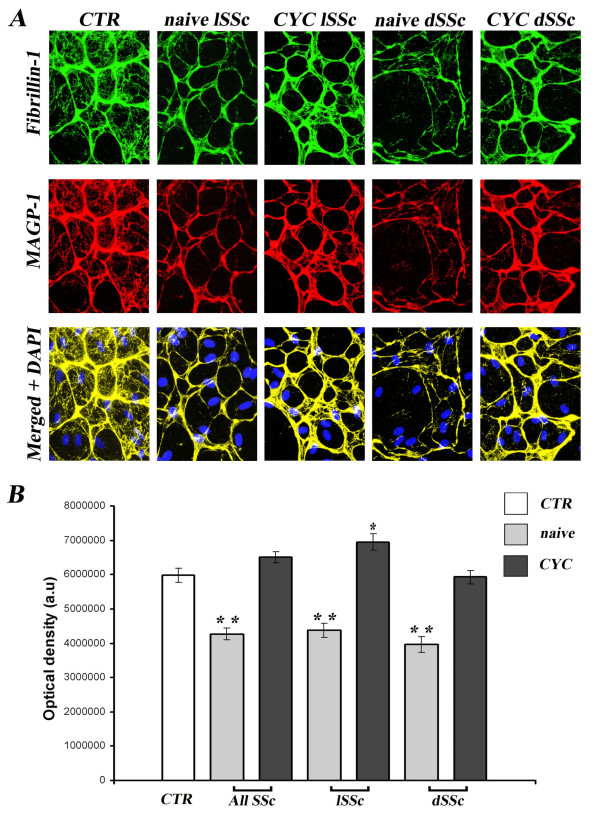Figure 1.
Systemic sclerosis sera affect deposition of fibrillin-1 and microfibril-associated glycoprotein 1 by dermal blood microvascular endothelial cells. Fibrillin-1 and microfibril-associated glycoprotein 1 (MAGP-1) deposition by dermal blood microvascular endothelial cells (B-MVECs) was evaluated after challenge with systemic sclerosis (SSc) and healthy control (CTR) sera. (A) Representative immunofluorescent images for fibrillin-1 (green) and MAGP-1 (red). The two molecules colocalize and are deposited in a honeycomb pattern, with empty spaces in which endothelial cells are still visible. 4′,6-diamidino-2-phenylindole (DAPI)-stained nuclei are blue in merged images. Original magnification, ×40. (B) Quantification of fibrillin-1 deposition by measurement of optical density in arbitrary units (a.u.). Data are means ± SEM. Fibrillin-1 deposition was significantly reduced in B-MVECs challenged with naïve SSc sera (all naïve SSc, naïve limited SSc (lSSc) and naïve diffuse SSc (dSSc)) vs. healthy controls (**P < 0.001). Fibrillin-1 was significantly higher in cyclophosphamide (CYC)-treated lSSc than in controls (*P < 0.05). No significant difference was found between all CYC-treated SSc and CYC-treated dSSc vs. healthy controls.

